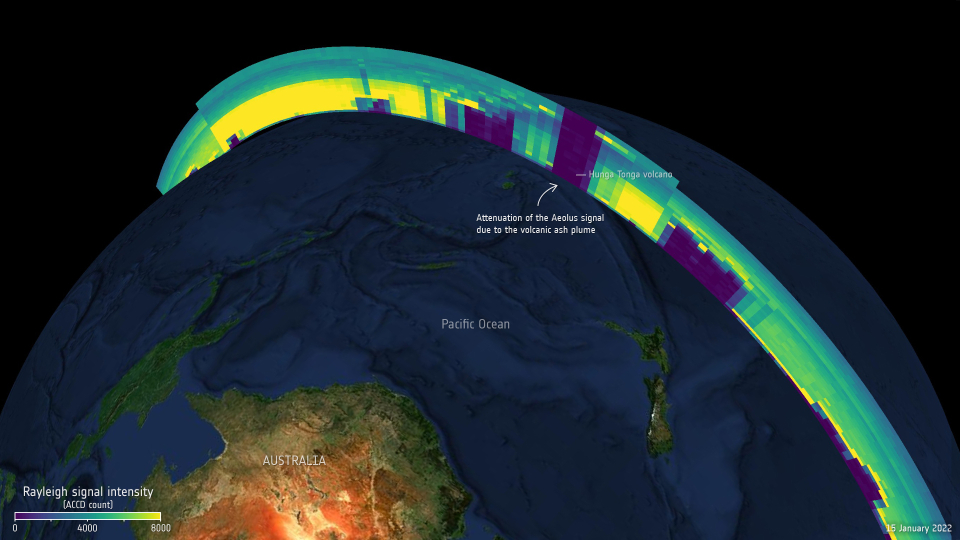Publié le 27 avril 2022
Heralding the start of the Aeolus Third Anniversary Conference in Taormina, Sicily, which highlighted the continued importance of this pioneering wind mission, the Aeolus Mission Manager, Tommaso Parrinello, said, “I believe that the best is still to come, and I’m pleased to announce that with a switch of the laser we are extending the lifetime of this remarkable mission hopefully for another year.”
Named after Aeolus, who in Greek mythology was appointed ‘keeper of the winds’ by the Gods, Aeolus is a one-of-a-kind satellite that measures wind from space. It is one of ESA’s Earth Explorers missions, which use advanced space technologies to answer critical questions about Earth’s natural processes and the impact that human activity is having.
Pulses of ultraviolet light fired from Aeolus’ ALADIN laser towards Earth are reflected from air molecules and particles in the atmosphere. Two optical analysers measure the Doppler shift of the molecular scattering, ‘Rayleigh’, and scattering from aerosols and water droplets, ‘Mie’. By analysing these Doppler shifts, it is possible to estimate wind speed and direction at various altitudes worldwide, making Aeolus the first satellite mission to deliver profiles of Earth’s wind on a global scale.
The uses for Aeolus wind data are many, from predicting the weather and improving climate models, to tracking events in near-realtime, such as the recent Hunga Tonga volcanic eruption.

Tonga volcanic ash plume leaves its mark in Aeolus data.
Click here to view the image at full resolution.
Despite exceeding its initial lifetime, meteorology experts at the Taormina conference expressed the value Aeolus data continue to have.
“Forecast Sensitivity Observation Impact shows that Aeolus is amongst the most important satellite missions, which is an impressive result for a demonstrator,” said Mike Rennie of the European Centre for Medium Range Weather Forecasts (ECMWF).
Continue reading the article
over on ESA's Observing the Earth website